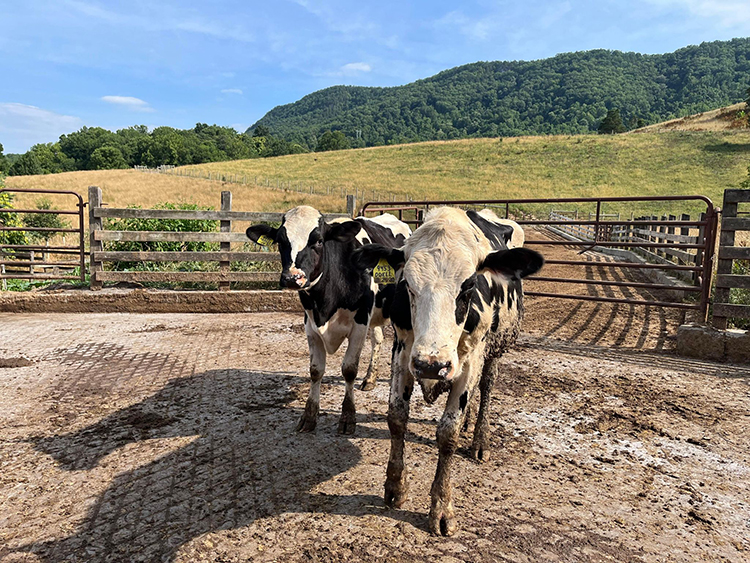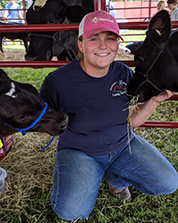
When an animal becomes ill on our farm, it’s all hands on deck. Our crew helps us contain the animal, and then Dad and I get to work diagnosing and treating whatever illness or injury that may have occurred. We usually diagnose the issue together by doing a full-scale work up that involves checking temperature, respirations, and heart rate, as well as for ketosis and other important standard procedures. Once we have a pretty clear diagnosis, we discuss a treatment plan. Then, it is up to me and him to carry out the plan and do checks on the animal as frequently as possible. We will do anything and everything to make sure an animal is treated and taken care of, and more often than not, we have success. That was the case with the two heifers in the picture. Meet Med-Med and O’Doodle.
Medley (or Med-Med) became stricken with pinkeye when she was around 6 to 8 months old. Unfortunately, the pinkeye caused her to lose her sight for quite some time. At the time, we had no clue she was ill until I fed them one day and realized she was blind. She hadn’t lost weight because she usually follows the others. However, she had been separated on this particular day. Dad and I had to quickly figure out how to help her get to food and water. Although she had been living in a pen with other heifers, we decided to isolate her into a pen that had no obstacles. That way, she could move around freely and find food and water easier. We treated her, fed her, and watched her slowly regain some eyesight back. Over time, her eyesight improved tenfold, and we were able to get her back with the rest of the herd. She was just bred the other night and is one success I have to say I’m pretty proud of.
Odell (or O’Doodle) was temporarily unable to walk when she was 11 months old. She had been frolicking in the yearling pen when she fell and hurt her back legs. We carried her home in a loader bucket full of straw and made a makeshift sling in order to help her regain strength in her legs. I gave her steroids/inflammatory medications to help reduce the pain and swelling and encourage her to try harder to get up. After one week, she jumped up and ran as hard as she could across the barn lot. We let her roam around the farm an additional week before we put her back with the others. Like Med-Med, she was bred the other week so she will eventually enter the milking herd.
These heifers are just two examples of the cattle we have managed to bring back from complete disaster. With a little faith, trust, and pixie dust, we are able to do what is best for the animal and what is most logical. Not all injuries can be successfully cured, but you can guarantee we do all we can. We are farmers, and we do everything and anything for our livestock because at the end of the day, we wouldn’t be able to live the life we love without them.

The author is a sixth-generation farmer and fifth-generation dairy producer in southwest Virginia, where she and her family own and operate a 145-head Holstein dairy. Courtney is involved in agriculture organizations throughout her community and is a graduate of Virginia Tech.








